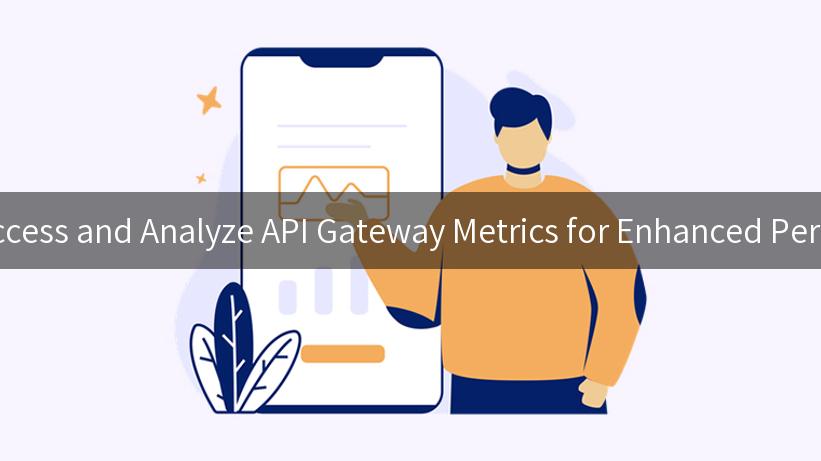
In today’s digital landscape, APIs are the backbone of numerous applications and services, facilitating communication between a multitude of systems. This is where API gateways come into play, acting as a critical intermediary between clients and the backend services. Understanding how to access and analyze API gateway metrics is paramount for optimizing performance, increasing reliability, and scaling applications. This article delves into the process of accessing and analyzing metrics specifically using IBM API Connect, the functionality of AI gateways, and how to leverage API runtime statistics effectively.
What are API Gateway Metrics?
API gateway metrics are quantitative data points that provide insights into the performance and usage of APIs. These metrics help developers and businesses understand how their APIs are performing, identify bottlenecks, manage traffic, and maintain a seamless user experience. Common API Gateway metrics include:
- Request Count: The total number of requests received.
- Response Time: The duration taken to process requests.
- Error Rate: The percentage of erroneous responses.
- Data Throughput: The amount of data processed over time.
- Latency: The time taken between a request being received and the corresponding response sent.
Understanding these metrics allows organizations to hone in on performance issues and optimize their APIs accordingly.
Why Access API Gateway Metrics?
Accessing API gateway metrics brings various advantages:
- Performance Monitoring: By continuously monitoring metrics such as response time and throughput, developers can ensure that APIs are performing well under different conditions.
- Error Tracking: Identifying and responding to error rates can inform teams about issues in code or infrastructure that need immediate attention.
- Capacity Planning: Monitoring metrics over time is key to understanding usage patterns, which can inform scaling decisions.
- User Experience Improvement: Metrics help in understanding how end users interact with APIs, enabling organizations to make improvements that enhance the overall experience.
How to Access API Gateway Metrics with IBM API Connect
IBM API Connect provides a robust set of tools for accessing and analyzing API metrics. The platform offers functionalities that help manage, secure, and monitor APIs through a unified interface.
Step 1: Log in to IBM API Connect
To start accessing metrics, log into your IBM API Connect environment. You will need administrative access to view comprehensive analytics.
Step 2: Navigate to the Analytics Dashboard
Once logged in, navigate to the “Analytics” section of the API Connect dashboard. Here, you will find various reports and visualizations that summarize API usage and performance metrics.
Step 3: Choose the Relevant API
Select the specific API for which you wish to gather metrics. The dashboard provides options to filter metrics by time period, API version, and other relevant criteria.
Step 4: View Runtime Statistics
Within the API’s analytics view, look for “API Runtime Statistics.” This section provides detailed insights into request counts, response times, error rates, and other pertinent metrics.
Step 5: Generate Reports
IBM API Connect allows users to generate reports based on the metrics collected. Utilize the reporting feature to export data for further analysis or share insights with team members.
Below is a table summarizing critical API metrics you can access:
| Metric Name |
Description |
Importance |
| Request Count |
Total number of incoming requests |
Indicates API usage level |
| Average Response Time |
Average time taken for the API to respond to requests |
Key indicator of performance |
| Error Rate |
Percentage of requests that resulted in errors |
Helps identify reliability issues |
| Latency |
Time taken from request to response |
Important for user experience |
| Data Throughput |
Amount of data processed over time |
Evaluates API efficiency |
Using AI Gateway for Enhanced Metrics Analysis
The integration of AI capabilities in the API ecosystem has transformed how metrics are analyzed. AI Gateways leverage machine learning algorithms to monitor APIs in real-time, offering predictive analytics, anomaly detection, and intelligent load balancing based on historical data.
Benefits of Using AI Gateway Metrics Analysis:
- Predictive Maintenance: AI can predict potential issues before they occur, allowing developers to take preventive measures.
- Automated Scaling: Based on usage patterns, AI Gateways can automatically scale resources to meet demand.
- Anomaly Detection: AI algorithms can detect abnormal patterns that may indicate security threats or system failures.
Example of Accessing API Metrics
Below, you will find a code example illustrating how to retrieve and analyze API metrics using IBM API Connect’s RESTful API. This example demonstrates how to pull API runtime statistics programmatically.
curl --location --request GET 'http://api_connect_url/v1/apis/{api_id}/metrics' \
--header 'Authorization: Bearer {your_auth_token}' \
--header 'Accept: application/json'
Replace api_connect_url, api_id, and your_auth_token with your actual IBM API Connect URL, the API ID you wish to query, and your authentication token, respectively.
This command retrieves comprehensive metrics in JSON format which can then be parsed and analyzed using various data analysis tools or programming languages.
“
APIPark is a high-performance AI gateway that allows you to securely access the most comprehensive LLM APIs globally on the APIPark platform, including OpenAI, Anthropic, Mistral, Llama2, Google Gemini, and more.Try APIPark now! 👇👇👇
“
Conclusion
Accessing and analyzing API gateway metrics is essential for maintaining optimal performance in an API-driven world. By leveraging tools such as IBM API Connect and integrating AI capabilities, businesses can gain deep insights into their APIs and ensure that they meet user demands and expectations. With the ability to monitor performance, track errors, and predict issues before they impact users, teams can create a more robust and reliable API infrastructure. These practices not only enhance performance but also drive business growth and innovation.
In summary, to access API gateway metrics effectively:
– Utilize the IBM API Connect’s analytics dashboard.
– Monitor key metrics such as request counts, response times, and error rates regularly.
– Leverage AI capabilities to improve analysis and automate responses to changing conditions.
Taking these steps ensures your APIs remain performant, reliable, and aligned with the needs of your users and business objectives.